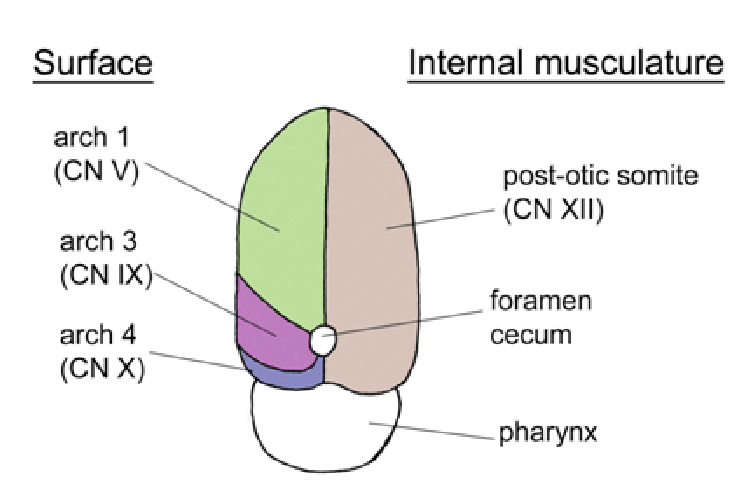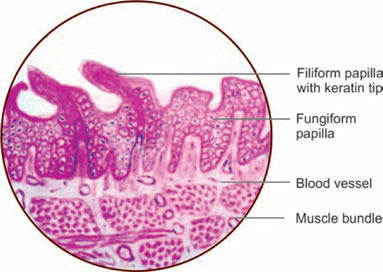An ulcer is break in the continuity of covering epithelium- skin or mucous membrane. It may either follow molecular death of the surface epithelium or its traumatic removal.
History:
In any medical cases, if you want to find the solid cause of disease, you need a clear history about particular symptoms or disease.
The following points noted in history of case of an ulcer:
- Mode of onset
- Duration
- Pain
- Discharge
- Associated disease.
Mode of onset-
How and when the ulcer developed? After some injury or spontaneously?
1.If ulcer occurs because of trauma- on removal of traumatic agents it will get healed.
e.g. Traumatic injuries of oral mucosa due to sharp food stuffs.
2.Ulcer which originate spontaneously may follow swelling, which may be matted tuberculous lymph nodes or gumma or rapidly growing malignant tumour. e.g. epithelioma or malignant melanoma.
Duration-
How long ulcer present there?
Acute ulcer- short duration
Chronic ulcer- long duration.
Incubation period should also known i.e time interval between exposure & onset of ulcer. example: in syphilis- 3 to 4 weeks, chancroid (soft sore) - 3 to 4 days.
Pain-
Ulcer which associates with inflammation will be painful.
Syphilitic ulcer & tropic ulcer resulting from nerve diseases (tabes dorsalis, transverse myelitis, peripheral neuritis) are painless.
Tuberculous ulcers are slightly painful.
Ulcers from malignant diseases such as epithelioma or basal-cell carcinoma are initially painless, becomes painful if infiltrate structure supplied by pain nerve endings.
Discharge-
If it discharges enquiry must be made about its nature- serum, pus or blood.
Associated disease-
Nervous diseases like tabes dorsalis, syringomyelia, transverse myelitis & peripheral neuritis result an ulcer (trophic or perforating ulcer).
Generalized tuberculosis, nephritis or diabetes may lead to ulcer formation.
Syphilis at primary stage gives rise to chancre and in tertiary stage rise to a gummatous ulcer.
Physical examination:
In case of ulcer, physical examination plays major role, because ulcer may be a sequel of malnutrition, general atherosclerosis, syphilis, tuberculosis etc.
General examination-
1. If ulcer is suspected to be syphilitic, a thorough search should be made for presence of other syphilitic stigmas in the body.
2. If it appears to be tuberculous, all lymph nodes in the body should be examined along with other examination such as chest, the neck, the abdomen etc.
3. If ulcer seems to be due to atherosclerotic or buerger's disease (ischaemic), the whole body must be examined for presence of atherosclerosis or its complication anywhere in the body. Moreover buerger's disease is bilateral condition and the other limb should always be examined.
4. When the ulcer is a trophic (perforating) one general examination must be made to know the type of nervous disease present with this condition.
Local examination:
It includes Inspection, Palpation, Examination of lymph nodes, Examination for vascular insufficiency, Examination for nerve lesion.
A. INSPECTION-
1. Size and Shape-
|
Tuberculous ulcer
|
Oval in shape, irregular crescentic border.
|
|
Syphilitic ulcers
|
Circular or semilunar to serpiginous ulcer
|
|
Varicose ulcers
|
Vertically oval in shape
|
|
Carcinomatous ulcers
|
Irregular in shape & size
|
A bigger ulcer will definitely take longer time to heal.
How to record exactly the size & shape of the ulcer- A sterile gauge may be pressed on to ulcer to get its measurements.
2. Number-
Tuberculous, gummatous, varicose ulcers & soft chancres may be more than one in number.
3. Position-
Varicose ulcer- medial malleolus of lower limb which shows varicose veins.
Rodent ulcer- confined to upper part of the face above line joining the angle of the mouth to the lobule of ear, occuring frequently in inner canthus of eye.
Tuberculous ulcers- neck & axilla or groin.
Lupus- form of cutaneous tuberculosis occurs more frequently on face, fingers & hand.
Hunterian chancre & soft sores- found over the external genitalia.
Gummatous ulcers- subcutaneous bones such as tibia, sternum, skull etc.
Perforating or trophic ulcers- heel of foot or ball of the foot, which carries maximum weight of the body.
Malignant ulcers- occur anywhere in body but most commonly seen on lips, tongue, breast, penis & anus.
4.Edge- Edge should not be confused with margin.
Edge is area between margin & floor of ulcer. Margin is junction between normal epithelium & ulcer.
|
Spreading ulcer
|
Edge is inflamed & oedematous
|
|
Healing ulcer
|
Shows blue zone (due to thin growing epithelium)
White zone (due to fibrosis of the scar)
|
Five common types of ulcer edge:
|
Undermined edge
|
Tuberculosis (ulcer spreads in & destroys the
subcutaneous tissue faster than it destroys the skin, overhanging skin is
thin, friable, reddish blue and unhealthy.
|
|
Punched out edge
|
Gummatous ulcer or deep trophic ulcer. (ulcers are
limited to ulcer itself & do not tend to spread to surrounding tissue.)
|
|
Sloping edge
|
Healing traumatic or venous ulcers.
|
|
Raised & pearly white beaded edge
|
Rodent ulcer (this type develops in invasive
cellular disease & becomes necrotic at the centre)
|
|
Rolled out (everted) edge
|
Squamous celled carcinoma or ulcerated
adenocarcinoma.
|
5. Floor-
Exposed surface of ulcer.
If floor is covered with red granulation tissue, ulcer seems to be healthy and healing.
Pale and smooth granulation tissue indicates slow healing ulcer.
Wash-leather slough (like wet chamois leather) on the floor of an ulcer is pathognomonic of gummatous ulcer.
Black mass on floor suggests malignant melanoma.
Trophic ulcer penetrates down to bone which forms floor.
6. Discharge-
Amount and smell of the discharge should be noted.
Healing ulcer- scanty serous discharge.
Spreading & inflamed ulcer- purulent discharge.
Tuberculous or malignant ulcer- sero-sanguineous discharge.
B-pyocynea infection- greenish discharge.
[Always advisable to take bacteriological wab of the ulcer]
7. Surrounding area-
In acute inflammation- surrounding area of an ulcer is glossy, red & oedematous.
In varicose ulcer- eczematous & pigmented.
Old case of tuberculosis- scar or wrinkling in surrounding skin of an ulcer.
8. Whole limb should be examined in case of ulcer.
Presence of varicose vein and deep vein thrombosis will indicate the ulcer to be varicose ulcer.
Neurological insufficiency will indicate the ulcer to be trophic one.
B. PALPATION-
1. Tenderness:
Acutely inflamed ulcer - more tender.
Chronic ulcers like tuberculosis and syphilitic ulcers - slightly tender.
2. Edge & margin:
Activity is maximum at the margin & edge of the ulcer.
Marked induration (hardness) of edge is feature of carcinoma.
A certain degree of induration or thickness is expected in any chronic ulcer.
3. Base:
You should know the difference between base & floor.
Base is on which ulcer rests, Floor means exposed surface within the ulcer.
Marked induration of the base is important feature of squamous celled carcinoma & hunterian chancre.
4. Depth:
It can be recorded in millimeter, Trophic ulcers may be as deep as to reach the bone.
5. Bleeding:
Bleeding on touch is common feature of malignant ulcer.
6. Relation with deeper structure:
A gummatous ulcer- over subcutaneous bone often fixed to it.
Malignant ulcer fixed to deeper structure by infiltration.
7. Surrounding skin:
Increased tenderness & temperature of surrounding skin indicates ulcer to be of acute inflammatory origin.
Fixity to deeper structure- malignant nature of lesion, surrounding skin is tested for nerve lesion (loss of sensation or motor deficit).
C. Examination of lymph nodes: [most important part of examination]
In acutely inflamed ulcers- regional lymph node enlarged, tender, & show signs of acute lymphadenitis.
Tuberculous ulcer- lymph nodes are enlarged matted & slightly tender.
Hunterian chancre- lymph node remains discrete, firm & shotty. (pathognomonic of hard [hunterian] chancre).
Gummatous ulcers- lymph node usually not invloved.
In rodent ulcer- lymph node not invloved because early obliteration of lymphatics by neoplastic cells.
In malignant ulcer- nodes are stony hard and may be fixed to neighbouring structures in late stage.
Stony hard consistency- suggest secondary invlovement.
D. Examination of vascular insufficiency:
The clinician must examine the condition of arterial proximal to the ulcer.
Atherosclerosis, buerger's disease, Raynaud's disease etc. may be cause of ulcer from poor circulation.
E. Examination for nerve lesion:
Trophic ulcers - develops due to repeated trauma to insensitive part of patient's body. Mostly seen in sole, as this is weight bearing zone if there is sensory loss.
Special investigation:
1. Routine examination of blood.
2. Examination of the urine.
3. Bacteriological examination of discharge.
4. Skin test.
5. Chest X ray.
6. Biopsy.
7. X-ray of the bone & joint.
8. Contrast radiography.
9. Imaging technique.

























